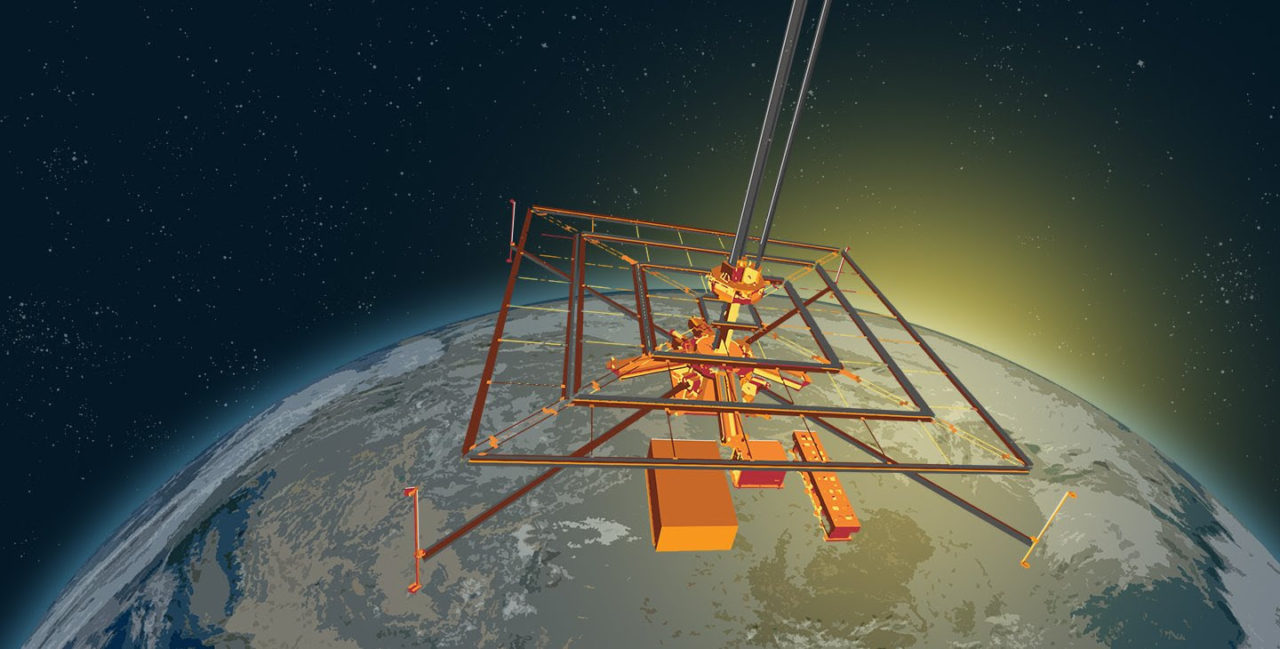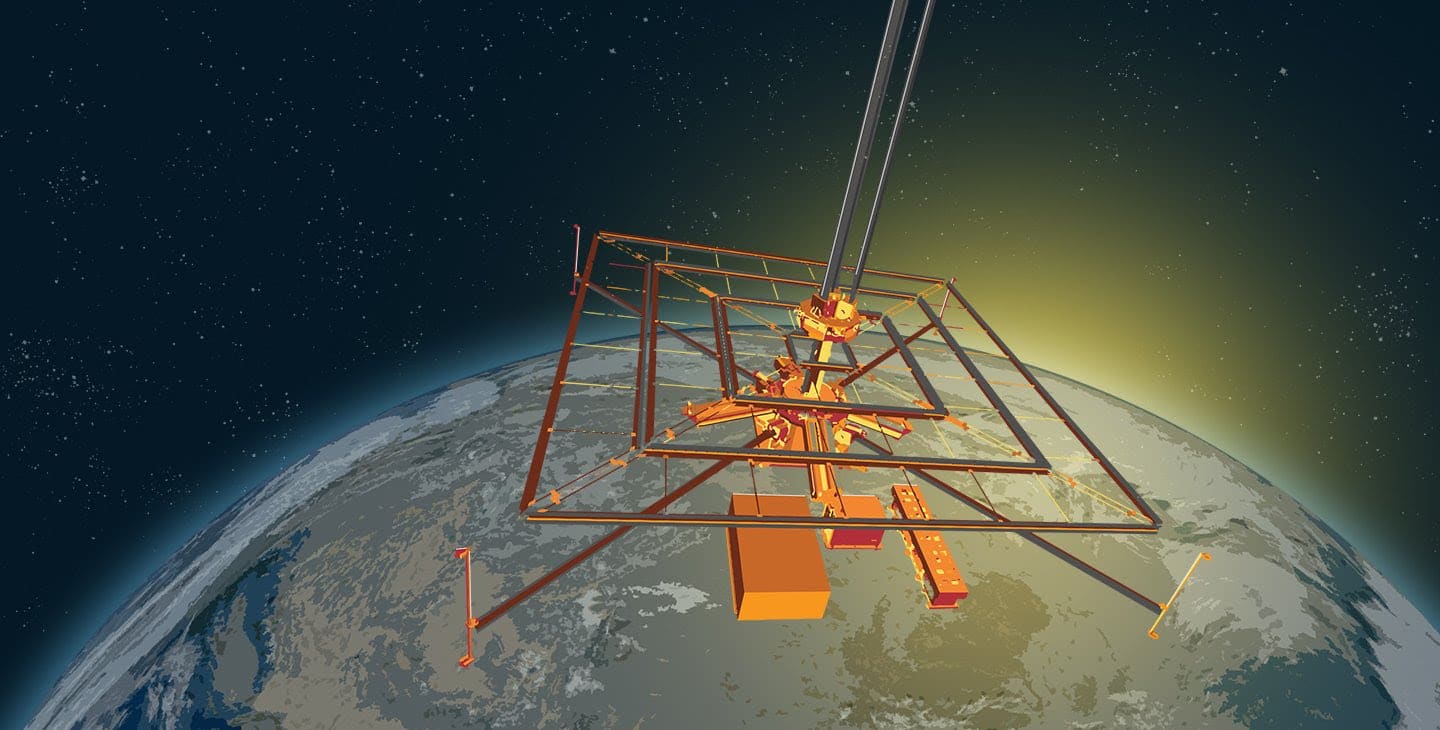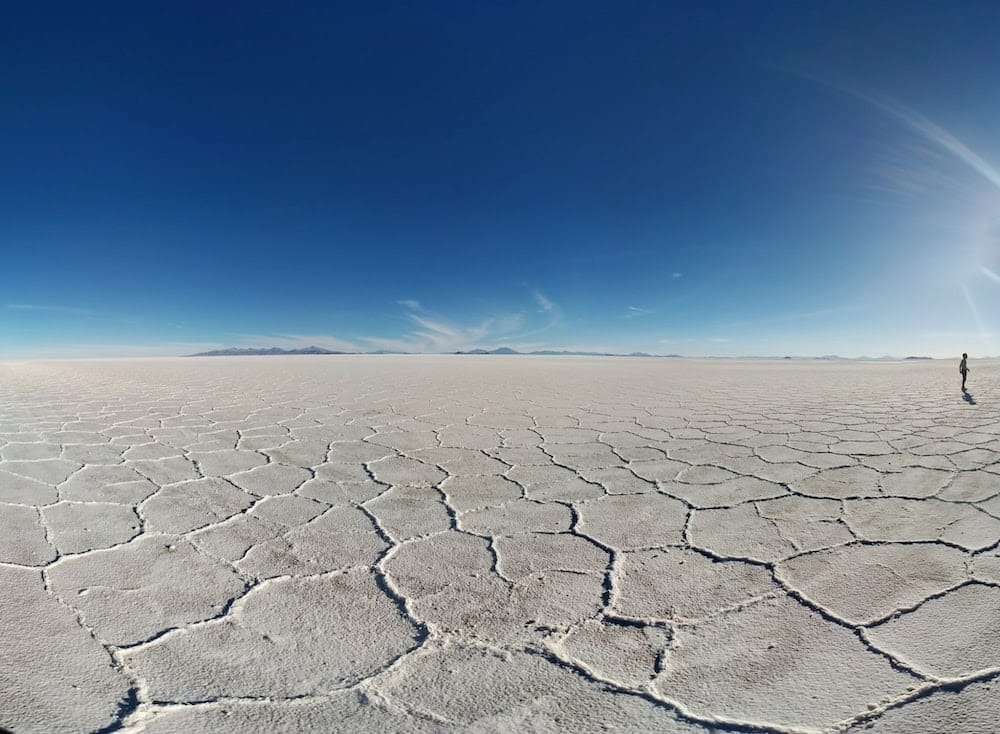
The famous university, California Institute of Technology, Caltech, has launched a demonstrator into orbit that will test various components that will allow a solar power plant to operate in space. On Jan. 2, 2023, a Transporter-6 mission with a SpaceX Falcon 9 rocket lifted off from Cape Canaveral carried a Caltech demonstrator to travel aboard Vigoride, a commercial orbital satellite platform provided by the manufacturer Momentus, which is also in charge of the operation.
A space-based solar power plant has long been envisioned by Americans, Japanese, Chinese and Europeans, and the project took the form of a demonstrator in 2011 at the California Institute of Technology. Tests have already been conducted on Earth, but there are still steps to be taken to validate the project’s new architecture.

Sergio Pellegrino, Harry Atwater, and Ali HajimiriSteve Babuljak for Caltech
The co-director of the project, Professor Ali Hajimiri, believes that whatever happens, this prototype is a step forward. Before a real solar power plant is put into orbit, many tests remain to be performed on the demonstrator. The payload of the entire platform is subdivided into three parts, plus a box that interfaces with the platform and weighs nearly fifty kilos.
The three subparts are called Dolce for the first, which will test the architecture and deployment system, Alba for the second, which will test thirty-two different types of photovoltaic cells to determine which will be the most efficient given the conditions of the space environment, and Maple for the third, an array of thirty-two very light microwave transmitters that will test the ability to channel the signal carrying the received solar energy back to Earth.
Cameras installed at the end of several masts will monitor the deployment of Dolce. The test of the Maple subpart is essential because the electrical energy, once stored by the plant, will have to be sent as a microwave signal to a receiver on Earth. One of the main difficulties lies in the propagation of a wave that unfolds in all directions, similar to the movement of water after the fall of a pebble. But with several transmitters, Maple comprising thirty-two, the interference of the different waves will allow focusing most of the energy of the emitted signal in a given direction.




